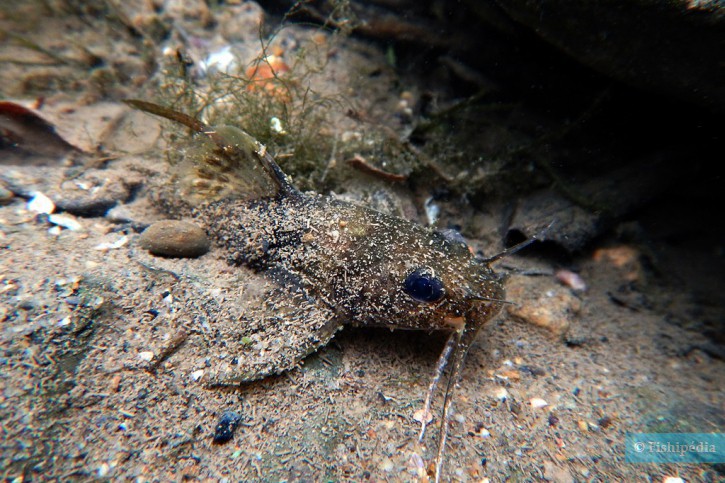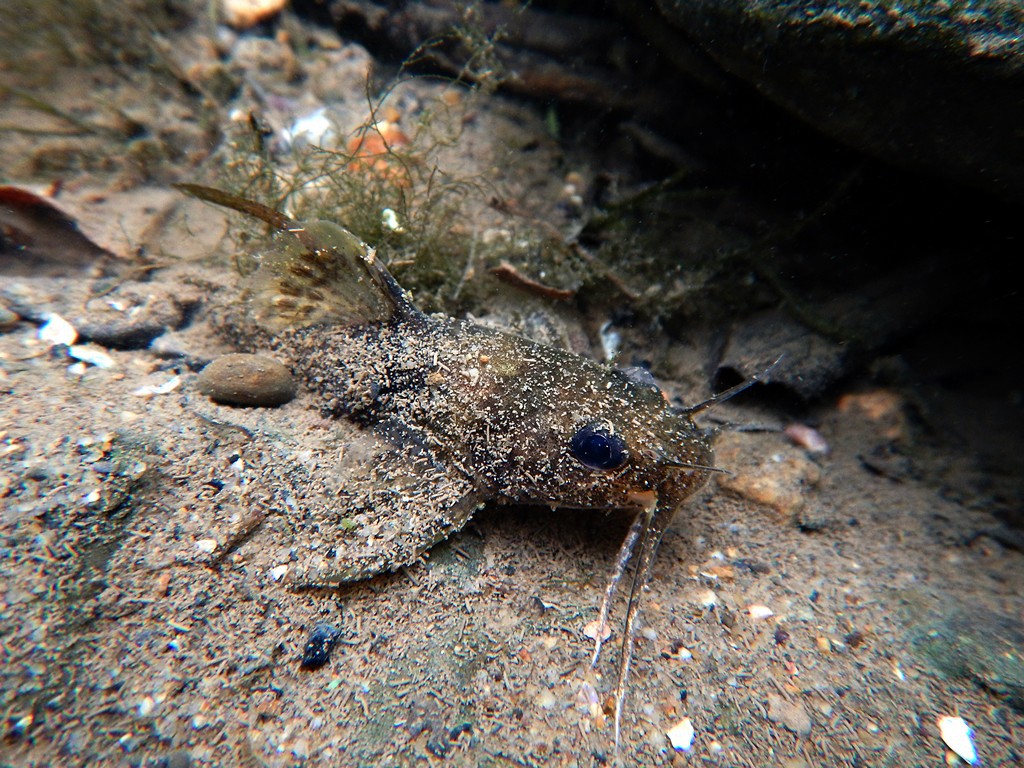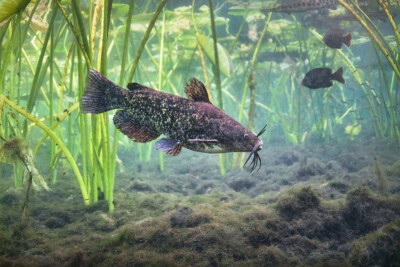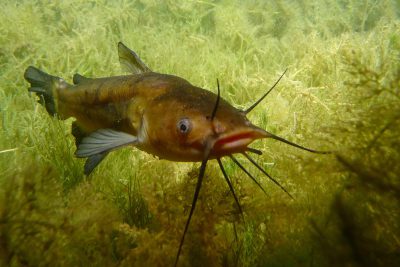Introduction
The yellowfin madtom is a cold water fish native to the Tennessee River in the United States. The degradation of its habitat has led to a decline in populations, resulting in its listing as a vulnerable species by the IUCN.
Who is it?
Morphology
-
Type
-
Average size8 cm
-
Maximum size14 cm
-
Longevity4 year
-
Type
-
Average size8 cm
-
Maximum size14 cm
-
Longevity4 year
How to recognize This fish ?
Yellowfin madtom is characterized by a yellowish color on the back and whitish on the belly. It is covered with a dark area on the nape and spots on the dorsal fin and at the base of the adipose fin.
It also has a crescent-shaped spot on the caudal fin. The median fins are speckled with black.
Sexual dimorphism
No information gathered regarding any potential dimorphism.
Behaviour & Life cycle
-
dietomnivorous
-
Sociabilityliving in small groups
-
territorialNo
-
Way of livingnocturnal
Due to their nocturnal nature, species of the genus Noturus are difficult animals to observe.
One could spend hours searching for a specimen during the day without success, while many individuals will come out of their hiding places at nightfall. This is because these fish have a habit of burying themselves under several centimeters of gravel.
During their nocturnal outings, they are apparently opportunistic predators, feeding on aquatic invertebrates and small fish, as well as scavenging.
Reproduction
-
Reproductionovipare qui pond sur substrat caché
The yellowfin madtom is an oviparous fish that spawns on hidden substrate. Spawning takes place in a cavity, under a large rock or another shelter. Once the spawning is done, only the male protects the territory and the eggs.
Each spawn can yield between 30 and 100 eggs. Spawning occurs between May and mid-July in water between 18 and 21°C. Females can spawn twice per season. The young reach 50 mm in one summer, and they will become mature at 10 cm.
Harmless species
This species does not represent any particular threats to humans when encountered in its natural environment.
Origin and distribution
Conservation status of populations (IUCN)
What is its habitat?
Natural environment characteristics
-
Temperature5 - 25 °C
-
FlowMedium, Slow and Stagnant
Biotope presentation
Yellowfin madtom appreciates gravel or sandy bottoms but the substrate can also consist of mud and humus. This fish spends most of the day hidden under gravel or in leaves.
It resides in a variety of habitats, from river beds to natural pools, and streams.
To go further
Sources & Contributions
Participation & Validation
The Fishipedia team and specialist contributors are committed to providing high-quality content. However, although the information comes from scientific sources or testimonials from specialists, the cards may contain inaccuracies.

Benoit Chartrer
Translation
Translation done with the valuable contribution of our translators, who make this information available to a wider audience. We sincerely thank them for their commitment.
Scientific partners
Species of the same family















